Abstract
OBJECTIVE: To estimate the prevalence of dementia and its subtypes by sex and age group for five regions of Canada. DESIGN: Prevalence survey. SETTING: Community and institutional settings in Canada, excluding those in the two territories, Indian reserves and military units. PARTICIPANTS: Representative sample of people aged 65 and over interviewed between February 1991 and May 1992. Those in the community (9008 subjects) were chosen randomly from medicare lists in nine provinces or from the Enumeration Composite Record in Ontario. People in institutions (1255) were randomly selected from residents in stratified random samples of institutions in each region. INTERVENTIONS: Screening with the Modified Mini-Mental State (3MS) Examination to identify cognitive impairment. Clinical examination of all those in institutions, those in the community with a 3MS score of less than 78 and a sample of those in the community with a 3MS score of 78 or more to diagnose dementia. Dementia and Alzheimer's disease were defined according to established criteria. MAIN OUTCOME MEASURES: Prevalence of dementia of all types, by region, sex and age group, the estimated number of cases in the population by type of dementia and the age-standardized rate per 1000 population. RESULTS: The prevalence estimates suggested that 252,600 (8.0%) of all Canadians aged 65 and over met the criteria for dementia (95% confidence interval [CI] 236,800 to 268,400). These were divided roughly equally between the community and institutional samples; the female:male ratio was 2:1. The age-standardized rate ranged from 2.4%, among those aged 65 to 74 years, to 34.5%, among those aged 85 and over. The corresponding figures for Alzheimer's disease were 5.1% overall (161,000 cases; 95% CI 148,100 to 173,900), ranging from 1.0% to 26.0%; for vascular dementia it was 1.5% overall, ranging from 0.6% to 4.8%. If the prevalence estimates remain constant, the number of Canadians with dementia will rise to 592,000 by 2021. CONCLUSIONS: These Canadian estimates of the prevalence of dementia fall toward the upper end of the ranges in other studies, whereas the estimates for Alzheimer's disease fall in the middle of the ranges. This may suggest an unusual balance between Alzheimer's and other forms of dementia in the Canadian population.
Full text
PDF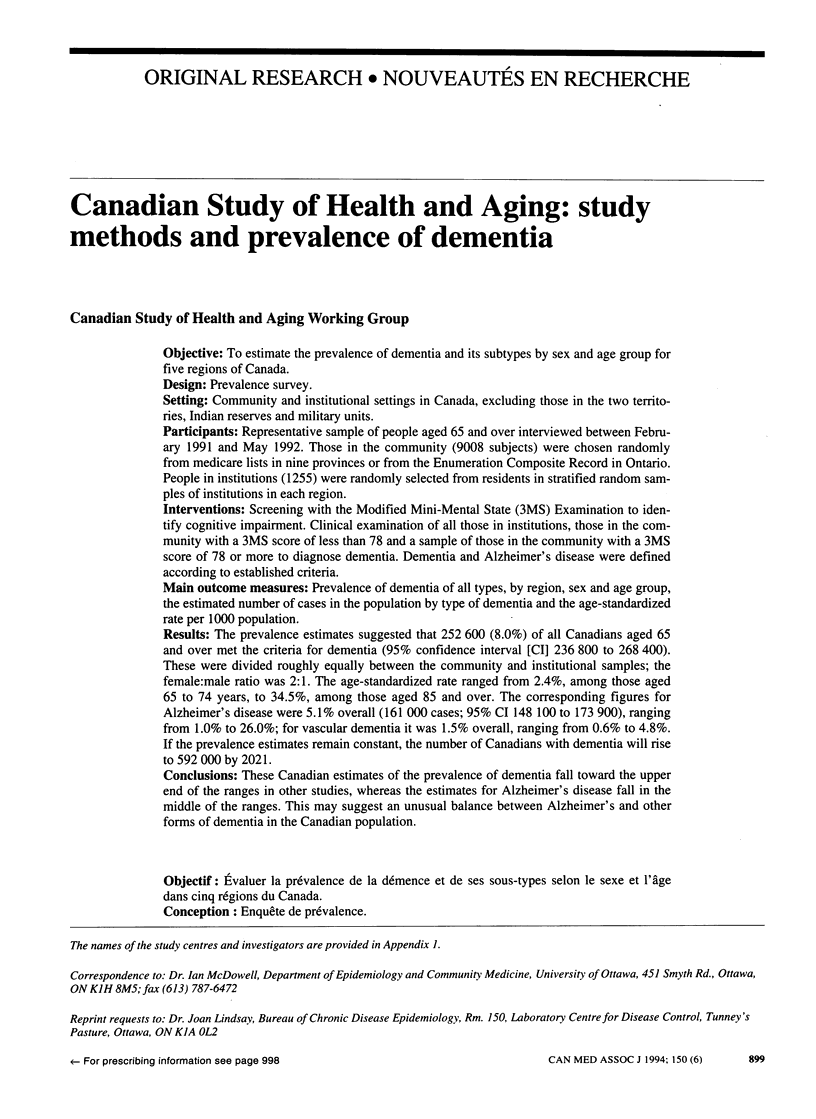
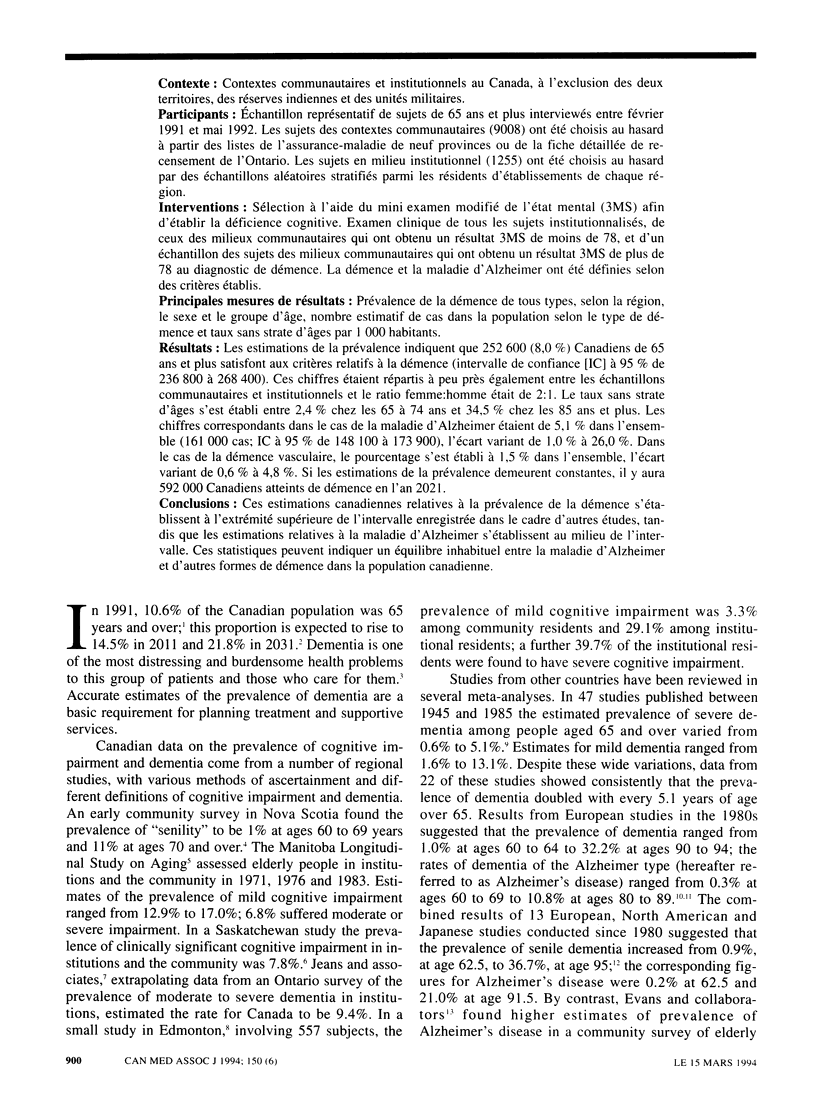
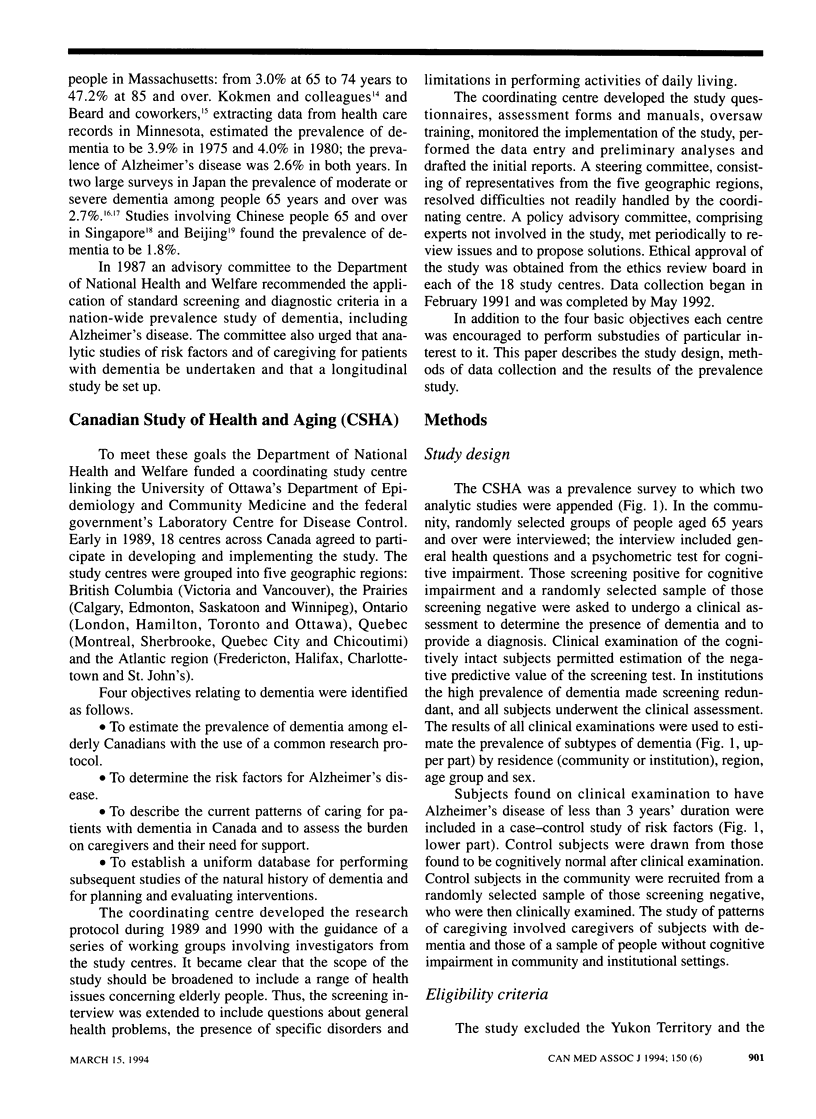
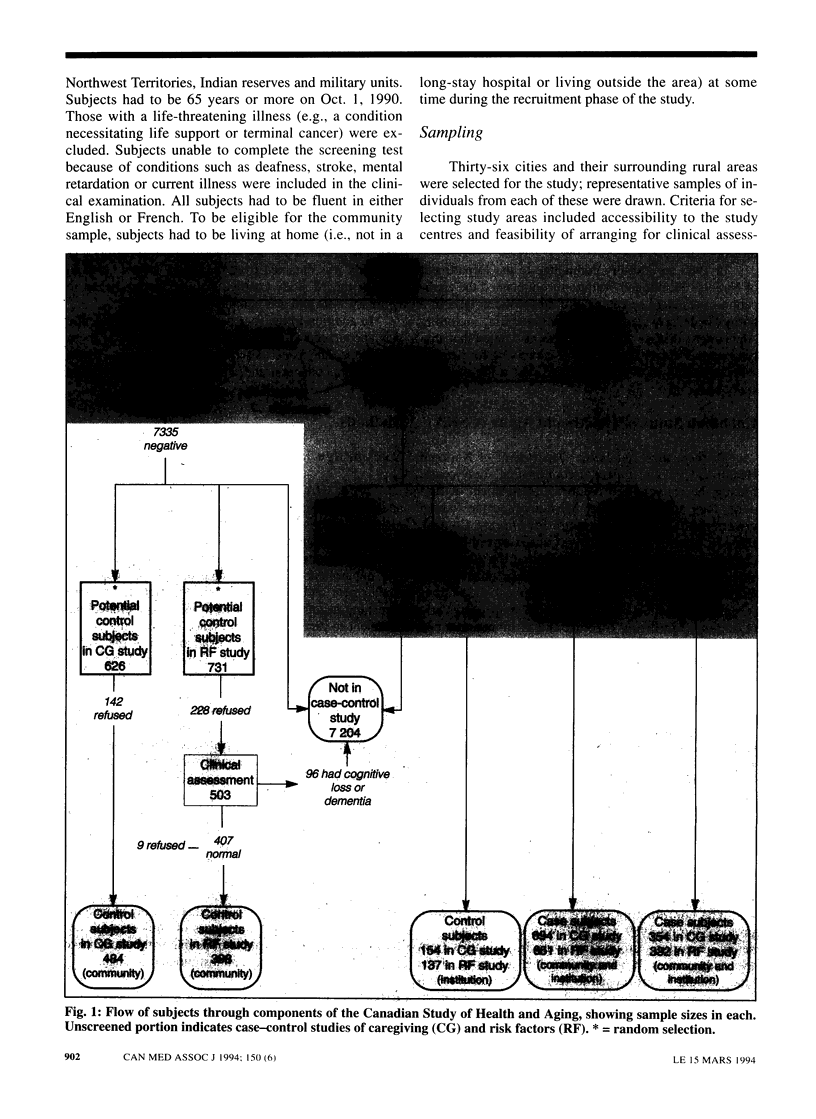
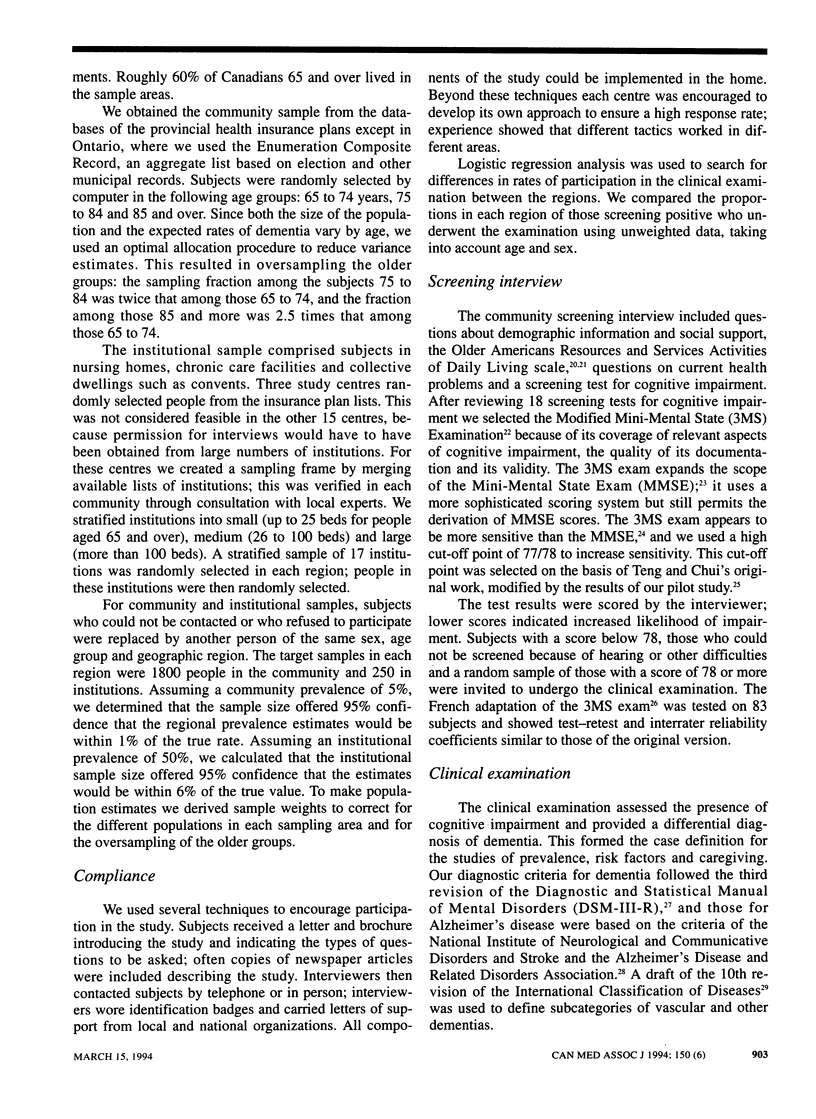
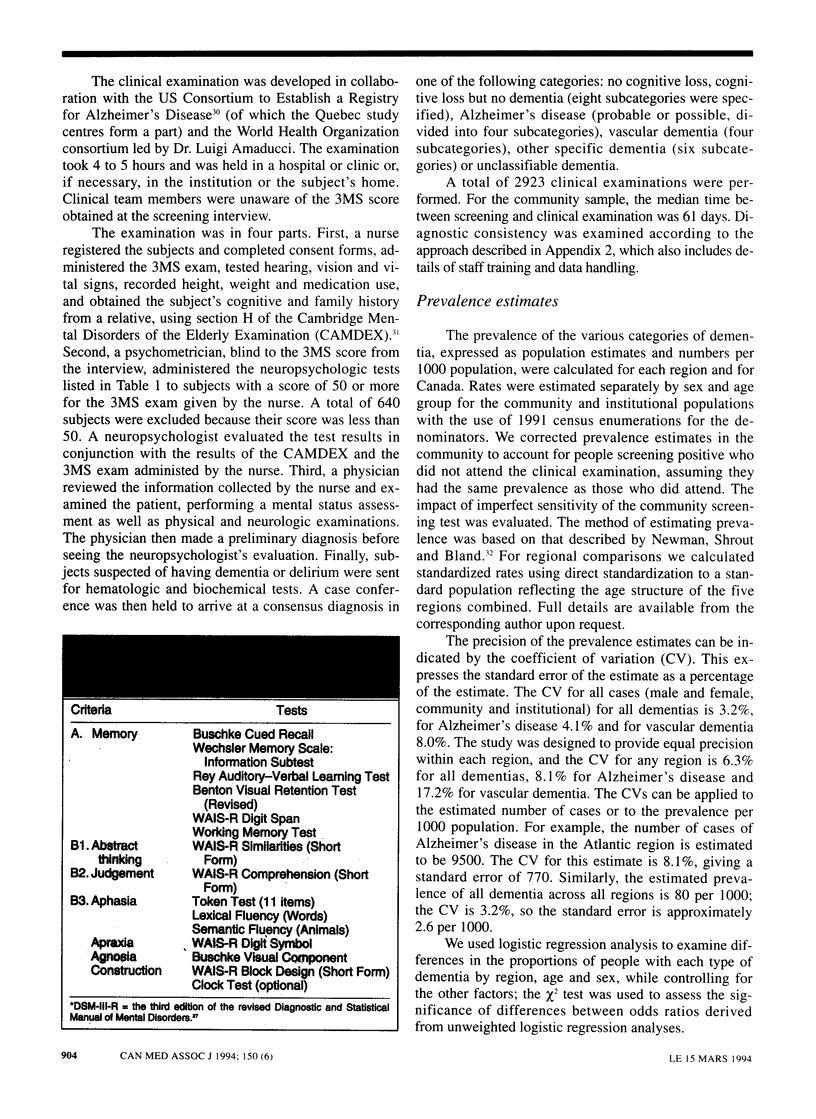
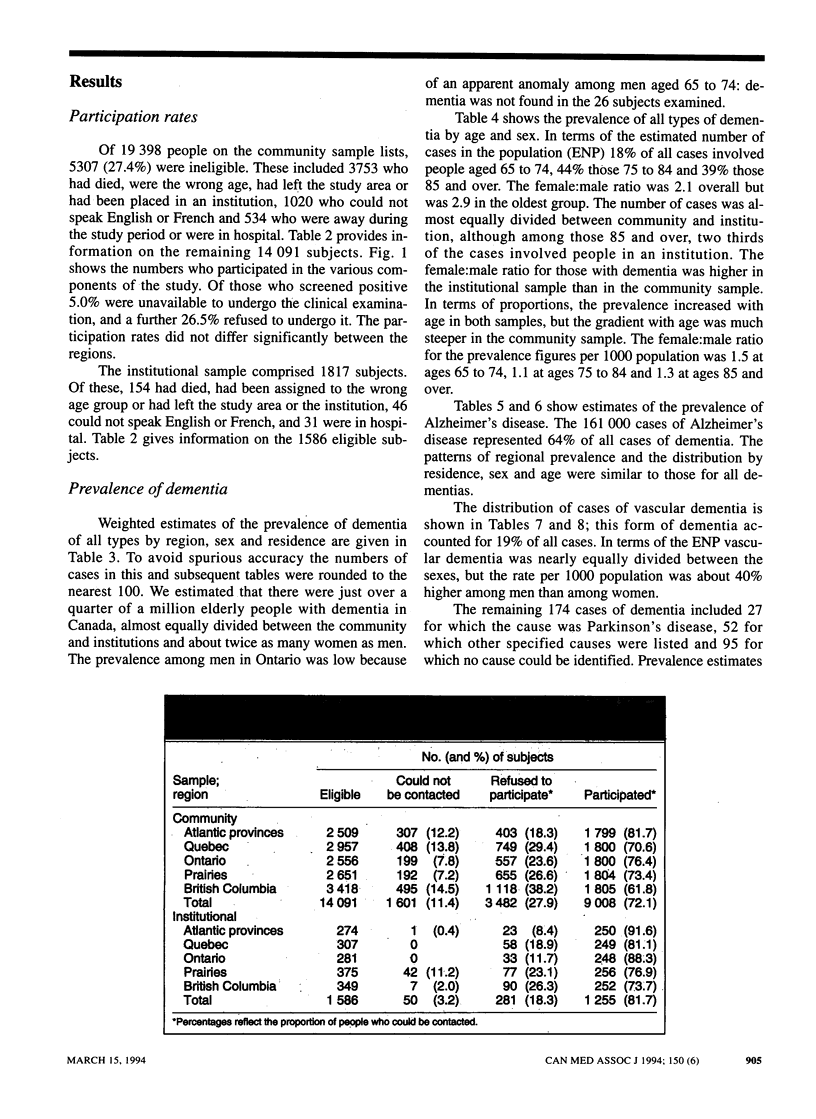
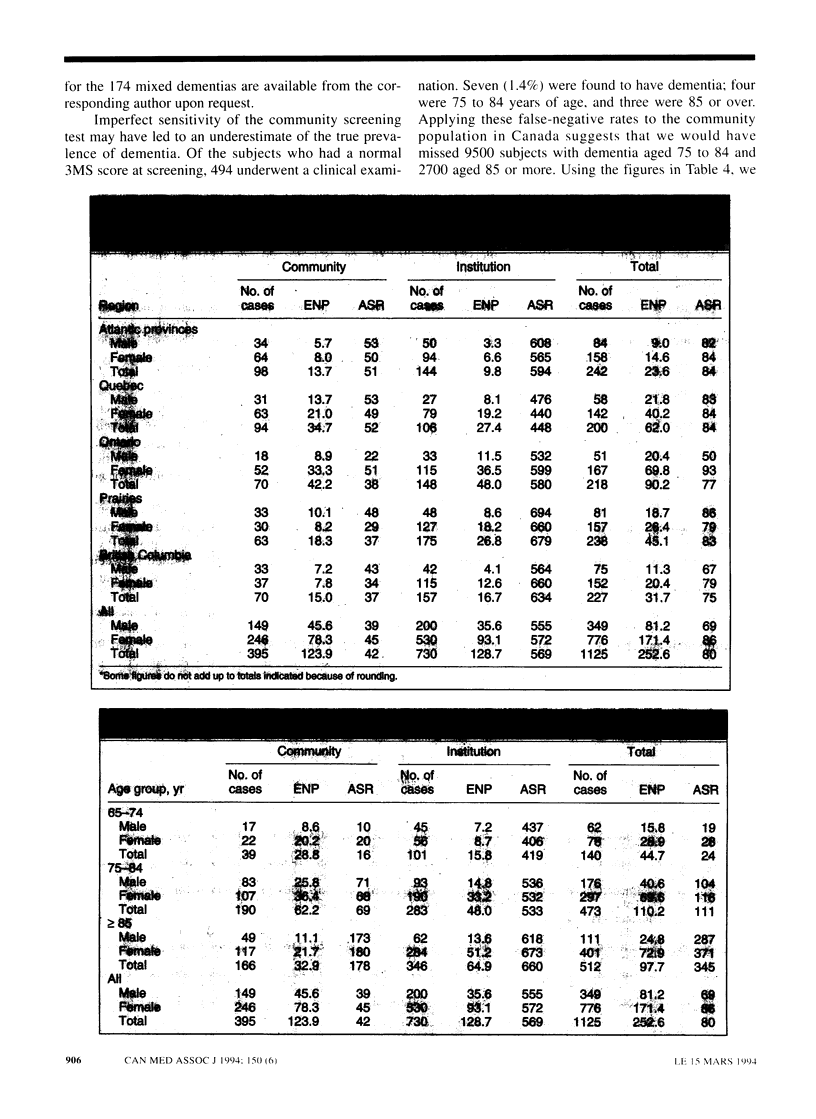
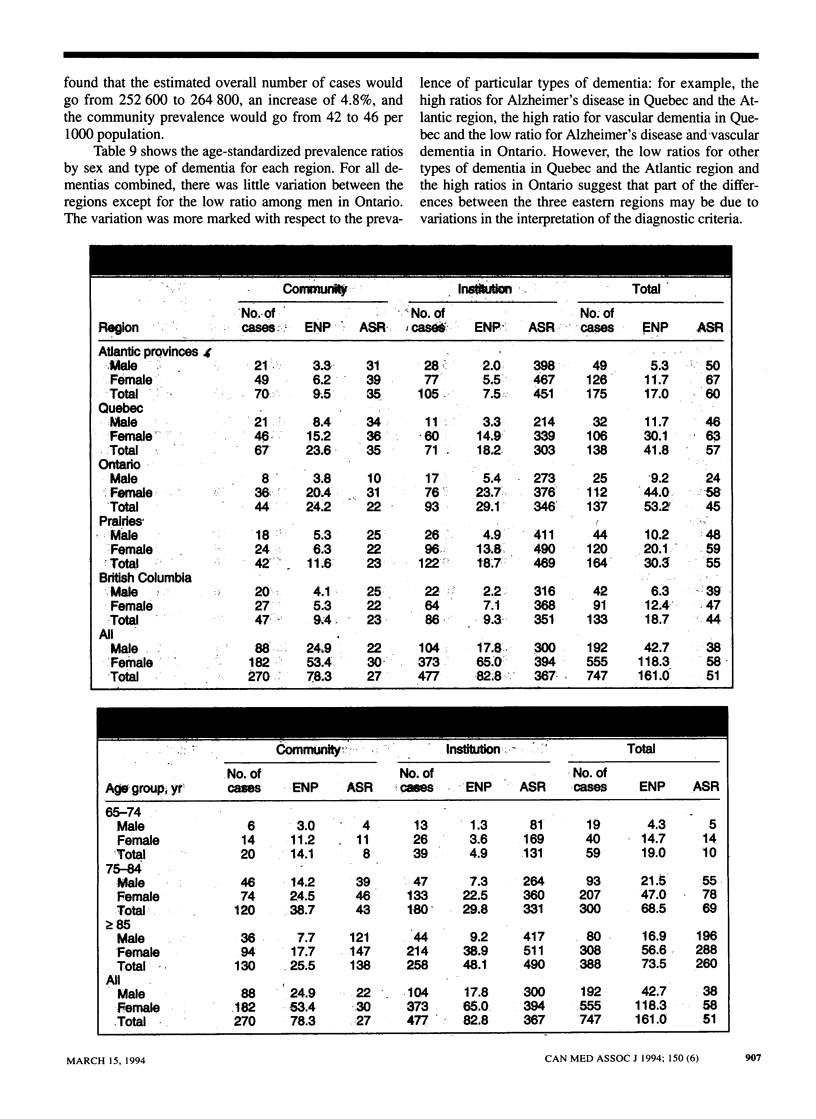
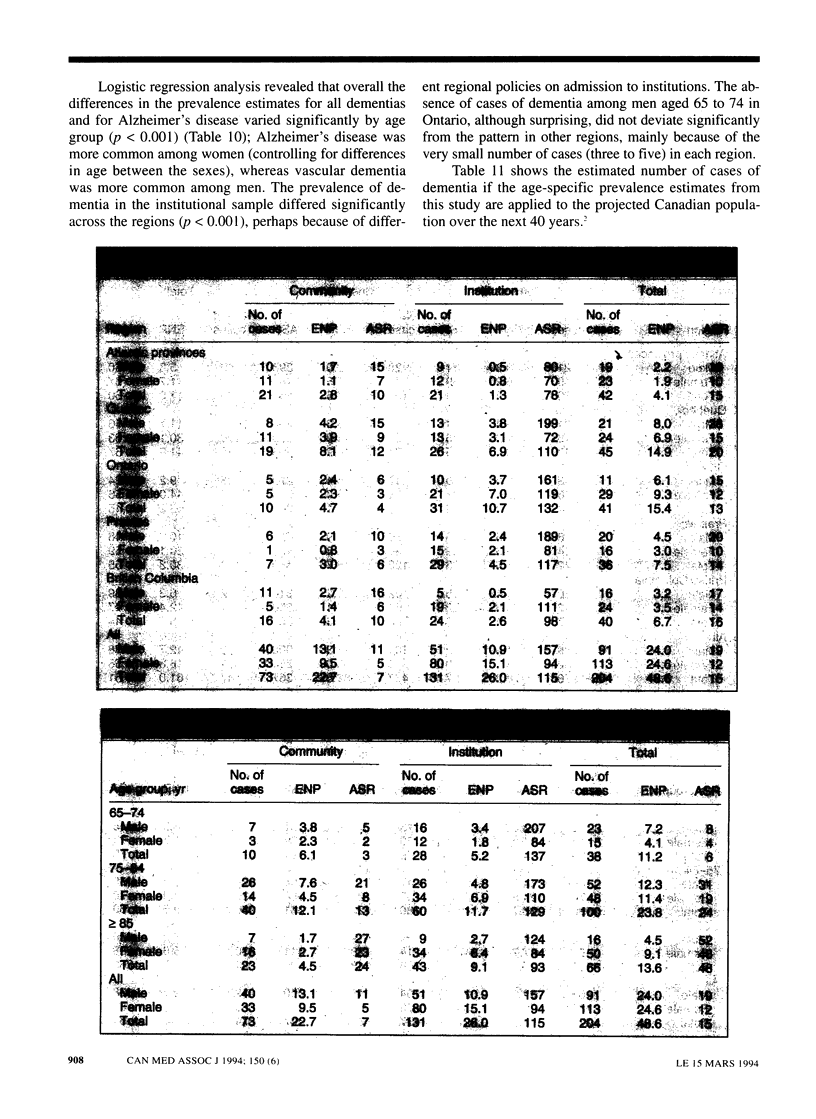

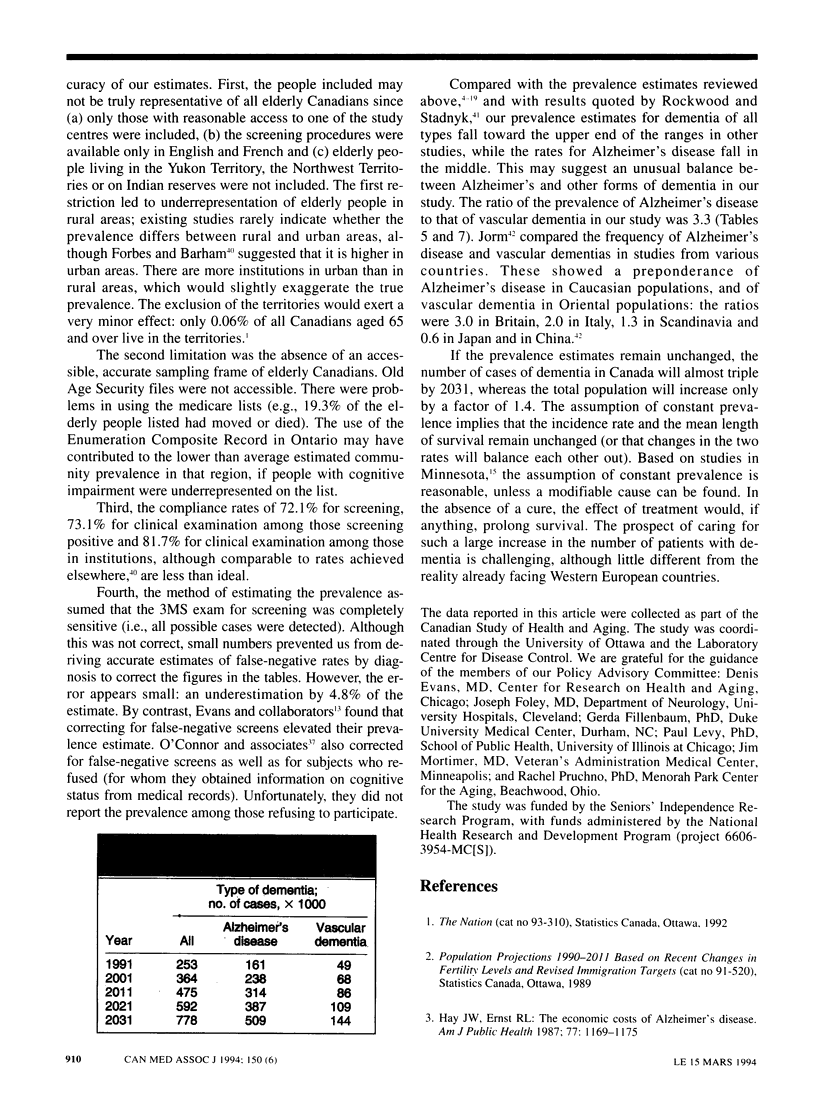
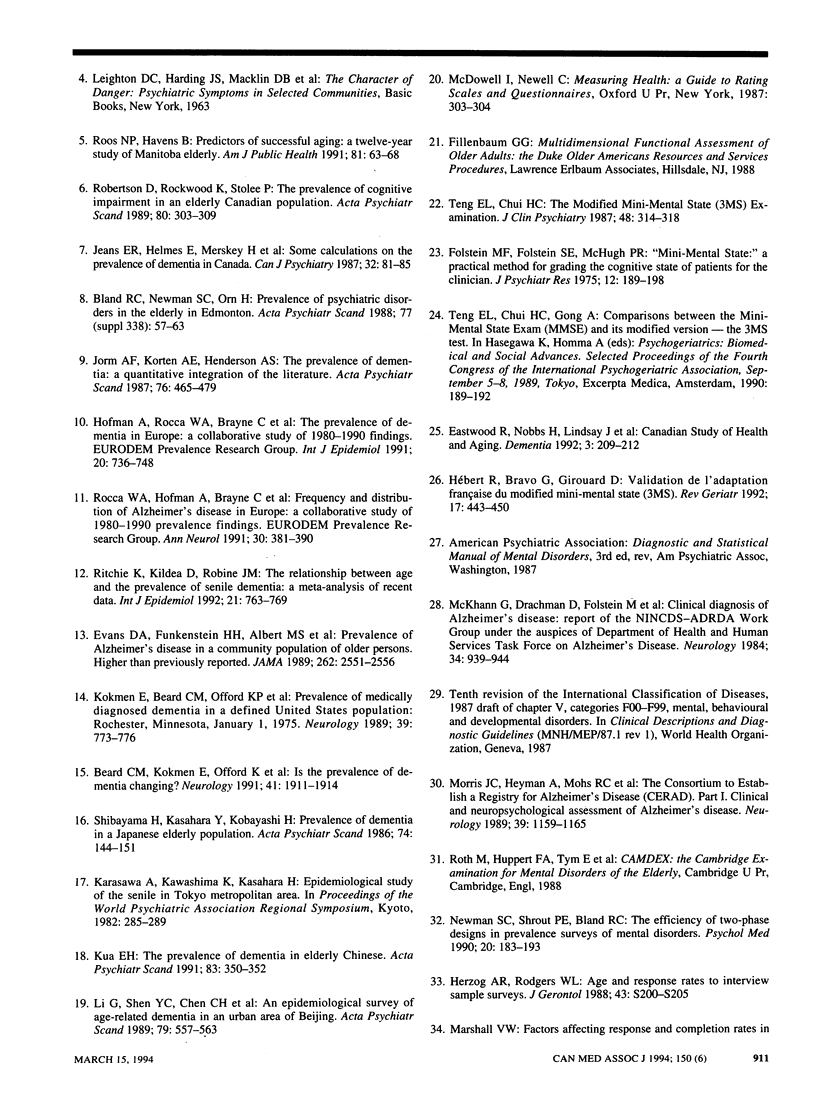
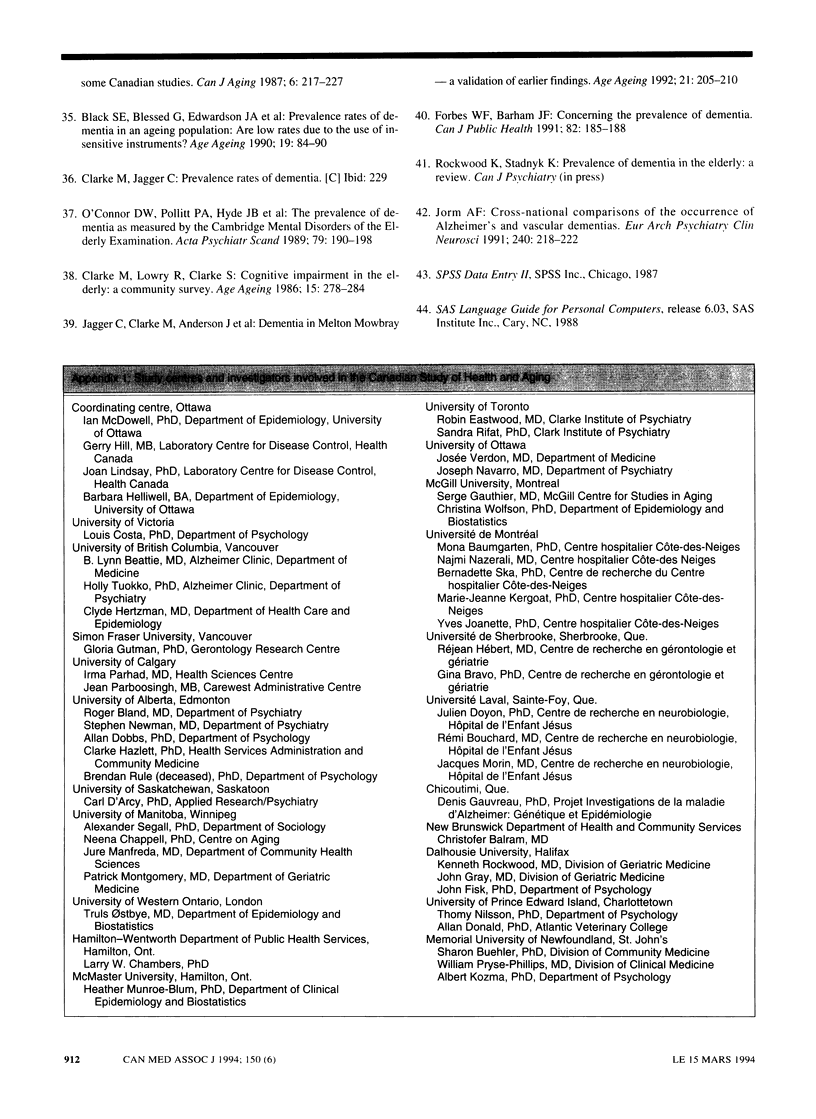
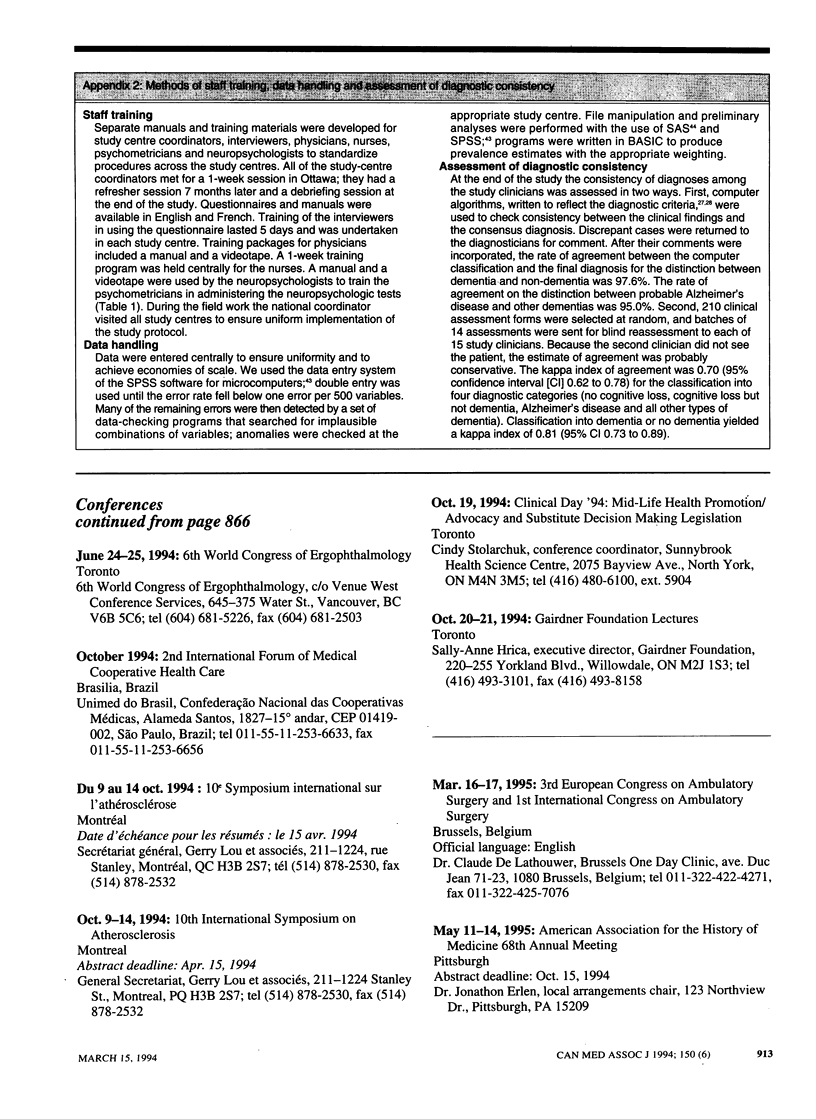
Selected References
These references are in PubMed. This may not be the complete list of references from this article.
- Beard C. M., Kokmen E., Offord K., Kurland L. T. Is the prevalence of dementia changing? Neurology. 1991 Dec;41(12):1911–1914. doi: 10.1212/wnl.41.12.1911. [DOI] [PubMed] [Google Scholar]
- Black S. E., Blessed G., Edwardson J. A., Kay D. W. Prevalence rates of dementia in an ageing population: are low rates due to the use of insensitive instruments? Age Ageing. 1990 Mar;19(2):84–90. doi: 10.1093/ageing/19.2.84. [DOI] [PubMed] [Google Scholar]
- Bland R. C., Newman S. C., Orn H. Prevalence of psychiatric disorders in the elderly in Edmonton. Acta Psychiatr Scand Suppl. 1988;338:57–63. doi: 10.1111/j.1600-0447.1988.tb08548.x. [DOI] [PubMed] [Google Scholar]
- Clarke M., Lowry R., Clarke S. Cognitive impairment in the elderly--a community survey. Age Ageing. 1986 Sep;15(5):278–284. doi: 10.1093/ageing/15.5.278. [DOI] [PubMed] [Google Scholar]
- Evans D. A., Funkenstein H. H., Albert M. S., Scherr P. A., Cook N. R., Chown M. J., Hebert L. E., Hennekens C. H., Taylor J. O. Prevalence of Alzheimer's disease in a community population of older persons. Higher than previously reported. JAMA. 1989 Nov 10;262(18):2551–2556. [PubMed] [Google Scholar]
- Folstein M. F., Folstein S. E., McHugh P. R. "Mini-mental state". A practical method for grading the cognitive state of patients for the clinician. J Psychiatr Res. 1975 Nov;12(3):189–198. doi: 10.1016/0022-3956(75)90026-6. [DOI] [PubMed] [Google Scholar]
- Herzog A. R., Rodgers W. L. Age and response rates to interview sample surveys. J Gerontol. 1988 Nov;43(6):S200–S205. doi: 10.1093/geronj/43.6.s200. [DOI] [PubMed] [Google Scholar]
- Hofman A., Rocca W. A., Brayne C., Breteler M. M., Clarke M., Cooper B., Copeland J. R., Dartigues J. F., da Silva Droux A., Hagnell O. The prevalence of dementia in Europe: a collaborative study of 1980-1990 findings. Eurodem Prevalence Research Group. Int J Epidemiol. 1991 Sep;20(3):736–748. doi: 10.1093/ije/20.3.736. [DOI] [PubMed] [Google Scholar]
- Jagger C., Clarke M., Anderson J., Battcock T. Dementia in Melton Mowbray--a validation of earlier findings. Age Ageing. 1992 May;21(3):205–210. doi: 10.1093/ageing/21.3.205. [DOI] [PubMed] [Google Scholar]
- Jeans E. R., Helmes E., Merskey H., Robertson J. M., Rand K. A. Some calculations on the prevalence of dementia in Canada. Can J Psychiatry. 1987 Mar;32(2):81–86. doi: 10.1177/070674378703200201. [DOI] [PubMed] [Google Scholar]
- Jorm A. F., Korten A. E., Henderson A. S. The prevalence of dementia: a quantitative integration of the literature. Acta Psychiatr Scand. 1987 Nov;76(5):465–479. doi: 10.1111/j.1600-0447.1987.tb02906.x. [DOI] [PubMed] [Google Scholar]
- Kokmen E., Beard C. M., Offord K. P., Kurland L. T. Prevalence of medically diagnosed dementia in a defined United States population: Rochester, Minnesota, January 1, 1975. Neurology. 1989 Jun;39(6):773–776. doi: 10.1212/wnl.39.6.773. [DOI] [PubMed] [Google Scholar]
- Kua E. H. The prevalence of dementia in elderly Chinese. Acta Psychiatr Scand. 1991 May;83(5):350–352. doi: 10.1111/j.1600-0447.1991.tb05555.x. [DOI] [PubMed] [Google Scholar]
- Li G., Shen Y. C., Chen C. H., Zhao Y. W., Li S. R., Lu M. An epidemiological survey of age-related dementia in an urban area of Beijing. Acta Psychiatr Scand. 1989 Jun;79(6):557–563. doi: 10.1111/j.1600-0447.1989.tb10303.x. [DOI] [PubMed] [Google Scholar]
- McKhann G., Drachman D., Folstein M., Katzman R., Price D., Stadlan E. M. Clinical diagnosis of Alzheimer's disease: report of the NINCDS-ADRDA Work Group under the auspices of Department of Health and Human Services Task Force on Alzheimer's Disease. Neurology. 1984 Jul;34(7):939–944. doi: 10.1212/wnl.34.7.939. [DOI] [PubMed] [Google Scholar]
- Morris J. C., Heyman A., Mohs R. C., Hughes J. P., van Belle G., Fillenbaum G., Mellits E. D., Clark C. The Consortium to Establish a Registry for Alzheimer's Disease (CERAD). Part I. Clinical and neuropsychological assessment of Alzheimer's disease. Neurology. 1989 Sep;39(9):1159–1165. doi: 10.1212/wnl.39.9.1159. [DOI] [PubMed] [Google Scholar]
- Newman S. C., Shrout P. E., Bland R. C. The efficiency of two-phase designs in prevalence surveys of mental disorders. Psychol Med. 1990 Feb;20(1):183–193. doi: 10.1017/s0033291700013362. [DOI] [PubMed] [Google Scholar]
- O'Connor D. W., Pollitt P. A., Hyde J. B., Fellows J. L., Miller N. D., Brook C. P., Reiss B. B., Roth M. The prevalence of dementia as measured by the Cambridge Mental Disorders of the Elderly Examination. Acta Psychiatr Scand. 1989 Feb;79(2):190–198. doi: 10.1111/j.1600-0447.1989.tb08587.x. [DOI] [PubMed] [Google Scholar]
- Ritchie K., Kildea D., Robine J. M. The relationship between age and the prevalence of senile dementia: a meta-analysis of recent data. Int J Epidemiol. 1992 Aug;21(4):763–769. doi: 10.1093/ije/21.4.763. [DOI] [PubMed] [Google Scholar]
- Robertson D., Rockwood K., Stolee P. The prevalence of cognitive impairment in an elderly Canadian population. Acta Psychiatr Scand. 1989 Oct;80(4):303–309. doi: 10.1111/j.1600-0447.1989.tb02984.x. [DOI] [PubMed] [Google Scholar]
- Rocca W. A., Hofman A., Brayne C., Breteler M. M., Clarke M., Copeland J. R., Dartigues J. F., Engedal K., Hagnell O., Heeren T. J. Frequency and distribution of Alzheimer's disease in Europe: a collaborative study of 1980-1990 prevalence findings. The EURODEM-Prevalence Research Group. Ann Neurol. 1991 Sep;30(3):381–390. doi: 10.1002/ana.410300310. [DOI] [PubMed] [Google Scholar]
- Roos N. P., Havens B. Predictors of successful aging: a twelve-year study of Manitoba elderly. Am J Public Health. 1991 Jan;81(1):63–68. doi: 10.2105/ajph.81.1.63. [DOI] [PMC free article] [PubMed] [Google Scholar]
- Ryseck R. P., Raynoschek C., Macdonald-Bravo H., Dorfman K., Mattéi M. G., Bravo R. Identification of an immediate early gene, pghs-B, whose protein product has prostaglandin synthase/cyclooxygenase activity. Cell Growth Differ. 1992 Jul;3(7):443–450. [PubMed] [Google Scholar]
- Shibayama H., Kasahara Y., Kobayashi H. Prevalence of dementia in a Japanese elderly population. Acta Psychiatr Scand. 1986 Aug;74(2):144–151. doi: 10.1111/j.1600-0447.1986.tb10598.x. [DOI] [PubMed] [Google Scholar]
- Teng E. L., Chui H. C. The Modified Mini-Mental State (3MS) examination. J Clin Psychiatry. 1987 Aug;48(8):314–318. [PubMed] [Google Scholar]


